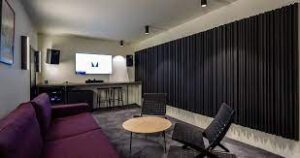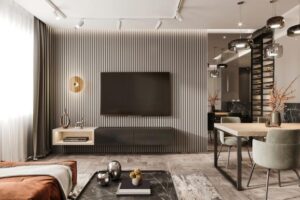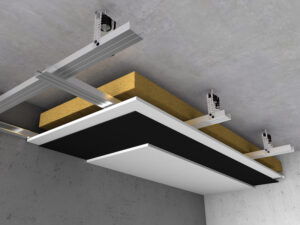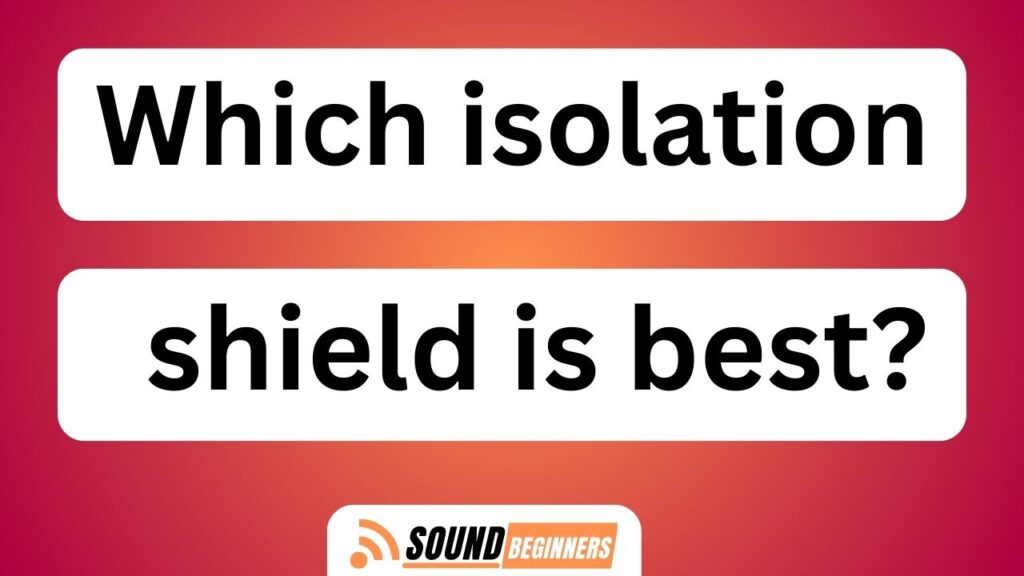In the realm of tranquility, our rooms serve as sacred havens, shielding us from the cacophony of the outside world. Yet, even within these sanctuaries, intrusive noises can infiltrate our peace like unwelcome guests.
If silence is truly golden, then achieving a state of complete soundproofing becomes an invaluable quest. With relentless determination, we embark on a journey to unlock the secrets of perfect acoustic isolation.
Every nook and cranny must be scrutinized; every crack and crevice meticulously sealed. We adorn our walls with specialized materials designed to absorb sound waves and eliminate vibrations. Our windows become bastions of serenity through the installation of soundproof panes.
We explore innovative techniques such as white noise generators and sound machines to drown out any remaining disturbances. Even our very floors are not spared attention, as we seek solace in materials engineered for optimal sound insulation.
As we navigate this labyrinthine path towards auditory bliss, it is essential to remember that achieving 100% soundproofing may be an elusive goal. However, armed with knowledge and unwavering dedication, we can come remarkably close to creating a sanctuary where silence reigns supreme.
Key Takeaways of How Do I full Soundproof My Room
- Use materials to absorb sound waves and vibrations on walls
- Seal gaps and cracks in doors, windows, walls, and floors to minimize external noise
- Enhance sound insulation with soundproof curtains or acoustic panels
- Eliminate vibrations and resonance using vibration isolation pads or damping materials
Assess the Noise Sources in Your Room
You need to take a moment and really listen to the annoying noises that are infiltrating your sanctuary because once you identify them, you’ll be one step closer to reclaiming your peace of mind.
Start by assessing noise pollution in your room. Is it coming from outside sources like traffic or neighbors? Or is it internal noise from appliances or air conditioning units?
Once you’ve pinpointed the sources, you can focus on minimizing external noise. Check for any gaps or cracks in doors, windows, walls, or floors that may be allowing sound to seep in. Use weatherstripping or sealant to fill these openings and create a more soundproof environment.
By addressing these issues upfront, you will significantly reduce unwanted noise and create a quieter space for yourself.
Seal Gaps and Cracks
By sealing every gap and crack, your room becomes a fortress against the unwelcome intrusion of noise. Here are five key steps to seal gaps and cracks effectively:
- Use weatherstripping or silicone caulk to seal gaps around windows and doors.
- Apply acoustic sealant to seal gaps between walls, floors, and ceilings.
- Install door sweeps or draft stoppers to seal gaps at the bottom of doors.
- Use foam tape or gaskets to seal electrical outlets and light switches.
- Seal any other small gaps or cracks with putty or expanding foam.
Properly sealing these openings will significantly reduce noise leakage in your room. Once you’ve sealed all the gaps and cracks, it’s time to explore the next step: using soundproof curtains or acoustic panels for added sound insulation.
Use Soundproof Curtains or Acoustic Panels
To enhance the sound insulation, consider using soundproof curtains or acoustic panels in your space. Soundproof curtains are made with heavy materials that block out noise and can be easily hung on windows or doors. They’re designed to absorb and reduce sound waves, making them an effective solution for reducing outside noise.
On the other hand, acoustic panels are thick and dense panels that can be mounted on walls or ceilings to absorb and dampen sound reflections within a room. They’re often used in professional recording studios or home theaters to improve the overall acoustics of a space.
While both options have their benefits, soundproof curtains offer the advantage of being portable and easy to install without any major renovations. However, if you’re looking for maximum soundproofing performance, it may be worth considering installing soundproof windows which provide a more comprehensive solution.
Install Soundproof Windows
Installing soundproof windows can greatly reduce noise pollution from outside, providing a more peaceful and quiet environment within your space. Soundproof windows are an effective alternative to traditional windows as they’re specifically designed to block out unwanted sounds. Here are five benefits of using soundproof windows:
- Enhanced insulation: Soundproof windows have multiple layers of glass with air or gas in between, which helps to insulate against noise.
- Increased energy efficiency: These windows also provide better thermal insulation, reducing heat transfer and saving on energy costs.
- Improved privacy: With their ability to block out sound, soundproof windows ensure that conversations and activities inside the room remain private.
- UV protection: Many soundproof window options come with built-in UV filters, protecting furniture and artwork from fading caused by sunlight exposure.
- Aesthetically pleasing: Soundproof windows are available in various designs and styles, allowing you to maintain the aesthetic appeal of your space while enjoying a quieter environment.
Using these alternatives can significantly contribute to a fully soundproofed room.
Use Soundproofing Materials on Walls and Ceilings
When it comes to soundproofing walls and ceilings, there are a few key points to consider. First, installing soundproof drywall or adding extra layers of regular drywall can greatly reduce the amount of noise that enters or leaves a room. This type of drywall is specifically designed to block sound transmission and can be an effective solution for creating a quieter space.
Additionally, using acoustic insulation or soundproofing foam can further enhance the sound absorption properties of your walls and ceilings, helping to create a more acoustically favorable environment.
Install soundproof drywall or add extra layers of regular drywall
For maximum soundproofing, you can enhance your room’s insulation by adding multiple layers of drywall or opting for specialized soundproof drywall. Soundproof drywall is specifically designed to reduce noise transmission and has several benefits. It contains additional layers of dampening materials that help absorb and block sound waves, providing superior sound isolation.
This type of drywall is thicker and denser than regular drywall, further enhancing its effectiveness in reducing noise transfer between rooms. Additionally, it has a higher Sound Transmission Class (STC) rating, indicating better soundproofing capabilities.
If you prefer to use regular drywall, adding extra layers can also significantly improve the room’s soundproofing abilities by increasing mass and density. However, keep in mind that installing multiple layers may require additional framing support due to the added weight.
Moving on to the next section about using acoustic insulation or soundproofing foam to absorb sound…
Use acoustic insulation or soundproofing foam to absorb sound
To further enhance the soundproofing capabilities of your room, another effective technique is to utilize acoustic insulation or soundproofing foam. These materials are specifically designed to absorb and dampen sound waves, reducing the amount of noise that can pass through walls.
Acoustic insulation typically consists of dense materials such as mineral wool or fiberglass, which are excellent at absorbing sound energy. On the other hand, soundproofing foam is made from open-cell polyurethane foam that helps to prevent sound transmission by trapping and dissipating sound waves.
When comparing these two options, it’s important to consider factors such as cost, effectiveness, and installation requirements. Acoustic insulation offers superior performance in terms of reducing airborne noise, while soundproofing foam excels at minimizing reverberations within a room.
Additionally, acoustic insulation can be installed within wall cavities or between drywall layers for optimal results.
Next up: let’s explore the benefits of installing soundproof doors for achieving maximum noise reduction in your room.
Soundproof Doors
Soundproofing doors can significantly enhance the tranquility of your room, creating a sanctuary away from the outside noise. When it comes to soundproof door installation, choosing the right materials is crucial. There are various options available, each with its own sound-blocking capabilities. To help you make an informed decision, consider the following table:
| Material | Sound-blocking Capability |
|---|---|
| Solid Wood | Excellent |
| Fiberglass | Good |
| Metal | Moderate |
| Vinyl | Fair |
| Composite | Average |
By selecting a material that suits your needs and budget, you can effectively reduce noise transmission through your door. Once you have installed a soundproof door, you can move on to the next step of eliminating vibrations and resonance in your quest for complete soundproofing perfection.
[Transition sentence: Now let’s explore how to eliminate vibrations and resonance in order to achieve optimal soundproofing.]
Eliminate Vibrations and Resonance
To eliminate vibrations and resonance in a room, we can employ the use of vibration isolation pads or mounts for appliances or furniture. These pads help absorb and dampen vibrations caused by these objects, preventing them from transferring to surrounding surfaces.
Additionally, applying damping materials such as mass-loaded vinyl or acoustic foam to walls or floors can effectively reduce resonance and minimize the transmission of sound waves through these surfaces.
By implementing these techniques, we can significantly enhance the soundproofing capabilities of a room and create a more acoustically controlled environment.
Use vibration isolation pads or mounts for appliances or furniture
By using vibration isolation pads or mounts, you can effectively reduce the noise caused by appliances or furniture. For example, John installed vibration isolation pads under his washing machine and noticed a significant decrease in the vibrations and noise generated during its operation. Here are four reasons why using vibration isolation pads or mounts is an effective method for soundproofing:
- Vibration control: These pads absorb and dissipate vibrations, preventing them from transferring to the floor or walls.
- Noise reduction techniques: By reducing vibrations, these pads also minimize the noise produced by appliances or furniture.
- Easy installation: Vibration isolation pads are simple to install and require no special tools or skills.
- Versatility: These pads can be used with various appliances such as washing machines, dryers, refrigerators, and even speakers.
Using vibration isolation pads is just one step towards achieving complete soundproofing in your room. To further enhance noise reduction, we can apply damping materials to reduce resonance in walls or floors without compromising on aesthetics.
Apply damping materials to reduce resonance in walls or floors
Applying damping materials will effectively minimize the annoying vibrations and echoes that invade our space, transforming it into a peaceful sanctuary. Damping techniques involve using soundproofing materials to reduce resonance in walls or floors.
One common method is to install mass-loaded vinyl (MLV) or acoustic foam panels on the surfaces. MLV is a dense material that blocks sound waves from entering or leaving the room, while acoustic foam absorbs and disperses sound energy, preventing it from bouncing back and creating echoes.
Additionally, adding layers of drywall with a damping compound between them can further enhance soundproofing. This compound contains viscoelastic polymers that dissipate vibration energy, reducing noise transmission through the walls.
By applying these damping techniques and using appropriate soundproofing materials, we can create a quiet environment free from unwanted noise disturbances.
To continue improving your room’s acoustics, let’s explore the next step: use white noise or sound machines…
Use White Noise or Sound Machines
Immerse yourself in the soothing ambiance of white noise or sound machines, and let them transport you to a realm of tranquility where outside disturbances fade into oblivion.
These devices are an effective solution for creating a soundproof environment within your room. By emitting a constant stream of background noise, they mask unwanted sounds that may disrupt your sleep. For individuals sensitive to noise, using earplugs in conjunction with white noise or sound machines can provide an even greater level of sound isolation.
Research has shown that background noise can have a positive impact on sleep quality by reducing the effects of sudden noises or disruptions.
When considering soundproofing options for your room, it is important to also consider the benefits of soundproof flooring.
Consider Soundproof Flooring
For an added touch of tranquility, you might want to think about investing in some soundproof flooring to enhance your relaxation experience.
Soundproof flooring is designed to minimize noise transmission and create a peaceful environment within your room. To achieve this, consider the following options:
- Soundproof underlayment: This material is placed between the subfloor and the flooring to absorb and block sound vibrations.
- Noise-reducing carpets: Opt for carpets with thick padding or those specifically designed to reduce noise transfer.
By combining these two elements, you can significantly reduce the impact of footsteps, echoes, and other ambient noises that may disrupt your peace.
Once you have implemented soundproof flooring, you can move on to creating a soundproof barrier by addressing other aspects of your room’s construction. This will further enhance the overall soundproofing effectiveness without compromising style or comfort.
Create a Soundproof Barrier
When it comes to achieving maximum soundproofing in your room, creating a soundproof barrier is an essential step. This involves implementing various soundproofing techniques to effectively block out unwanted noise from entering or leaving the space.
One effective method is to use mass-loaded vinyl (MLV) as a barrier material. MLV is a dense and flexible material that can be installed on walls, ceilings, and floors to reduce sound transmission. It acts as a barrier by absorbing and dissipating sound energy, preventing it from passing through.
To further enhance the soundproofing capabilities of your barrier, consider adding additional layers such as acoustic foam or panels. These materials help to absorb and diffuse sound waves, minimizing their impact on the room.
By creating a well-designed and properly constructed soundproof barrier using these techniques, you can significantly reduce noise transfer and achieve optimal sound insulation in your room.
| Soundproofing Technique | Description |
|---|---|
| Mass-Loaded Vinyl (MLV) | Dense and flexible material used as a barrier for reducing sound transmission |
| Acoustic Foam | Absorbs and diffuses sound waves to minimize their impact |
Incorporating these materials into your construction plans will greatly contribute to the overall effectiveness of your soundproofing efforts.
Frequently Asked Questions
What are some common noise sources in a room that I should be aware of?
Common noise sources in a room include HVAC systems, footsteps, and outside traffic. To soundproof an office space, consider using acoustic panels on walls, sealing gaps around windows/doors, and adding carpets or rugs to absorb sound.
How do I identify and seal gaps and cracks in my room?
To identify gaps and seal cracks in a room, start by examining the perimeter of windows, doors, and baseboards. Use weatherstripping or caulk to seal any visible openings. Inspect electrical outlets and switch plates for gaps and install foam gaskets for a tighter seal.
What is the difference between soundproof curtains and acoustic panels, and which one is more effective?
When comparing soundproof curtains and acoustic panels, it’s like choosing between a band-aid and stitches. Soundproof curtains are affordable and easy to install, but not as effective as acoustic panels in reducing noise.
Can I install soundproof windows myself, or do I need professional help?
For the installation of soundproof windows, it is recommended to hire professionals due to their expertise in ensuring a proper fit and sealing. DIY installation may lack the precision required for maximum sound insulation. Hiring professionals ensures optimal results.
What are some recommended soundproofing materials that I can use on my walls and ceilings?
For the best soundproofing materials for floors, consider using thick carpets or rugs with a dense underlay. To soundproof a room on a budget, opt for acoustic foam panels and weatherstripping tape to seal gaps.
Conclusion
In conclusion, by following the steps outlined in this article, we can achieve a fully soundproofed room.
Assessing noise sources and sealing gaps are crucial initial steps.
Utilizing soundproof curtains or acoustic panels and installing soundproof windows further enhance insulation.
Soundproofing materials on walls and ceilings eliminate unwanted vibrations and resonance.
Adding white noise or utilizing sound machines creates a serene atmosphere.
Lastly, considering soundproof flooring completes the barrier against intrusive noises.
With these measures in place, your room will become an oasis of peace, protected from external disturbances.






